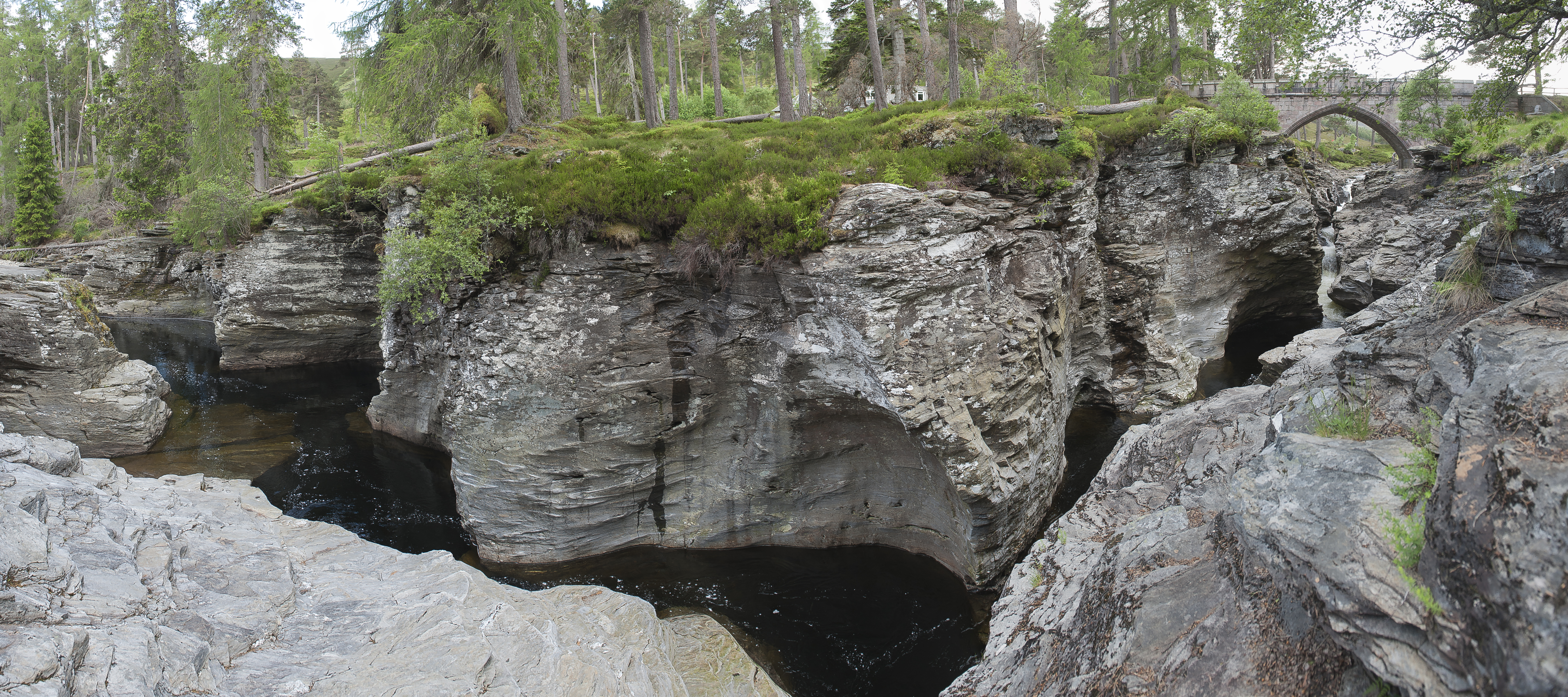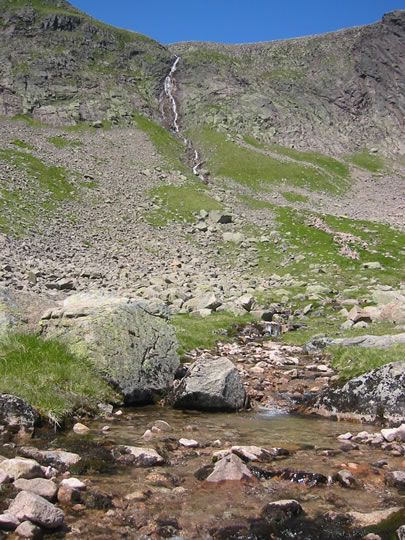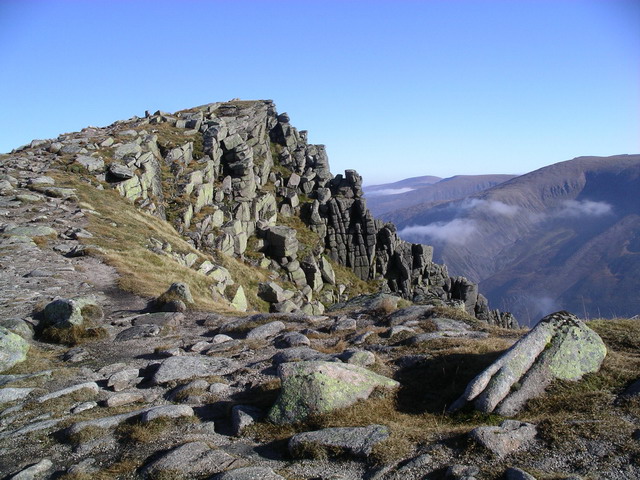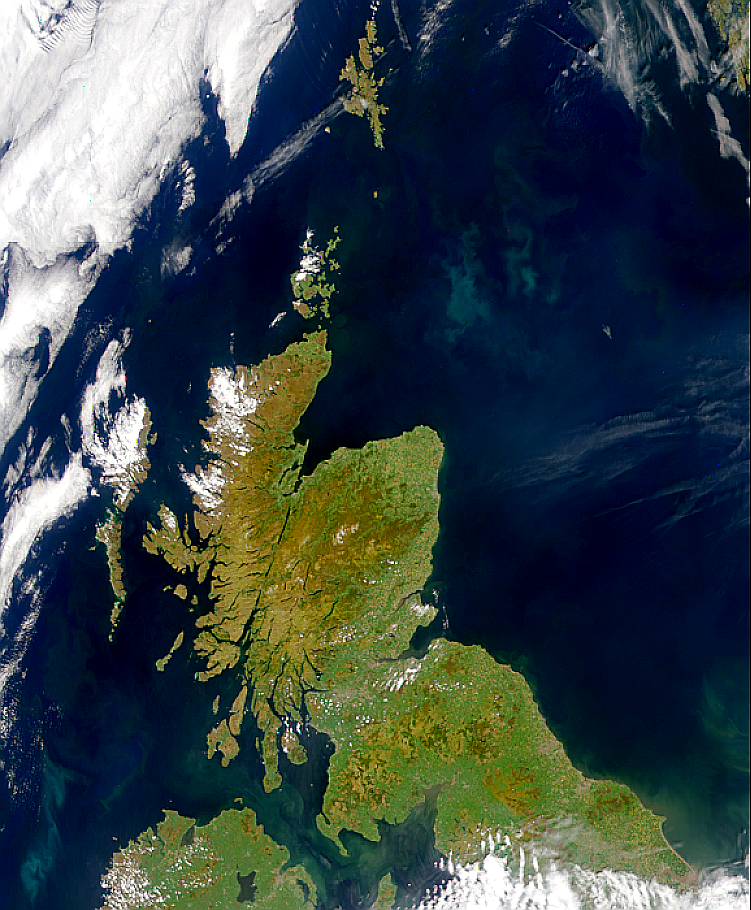|
Linn (Geographical Feature)
In Scotland and northern England, a Linn is a geographical water feature, a watercourse that has cut through a shelf of hard rock creating a narrow (usually), steep-sided crevice (fracture) through which it runs. Typically one named after a river or area can have application even for more than one such feature. The photograph of the Linn of Dee illustrates the attributes of a typical 'Linn'. In ''Gordon (1925)'' the author describing a walk down ''Glen Avon'' in the Cairngorms mentions two ''Linns'' on the ''River Avon'' - first: Second: A linn may also refer to a waterfall or a pool at the foot of a waterfall, with the derivation a confusion of Scots Gaelic ''linne'' (pool) and Old English Old English ( or , or ), or Anglo-Saxon, is the earliest recorded form of the English language, spoken in England and southern and eastern Scotland in the Early Middle Ages. It developed from the languages brought to Great Britain by Anglo-S ... (torrent). Sources * {{Cite book ... [...More Info...] [...Related Items...] OR: [Wikipedia] [Google] [Baidu] |
Scotland
Scotland is a Countries of the United Kingdom, country that is part of the United Kingdom. It contains nearly one-third of the United Kingdom's land area, consisting of the northern part of the island of Great Britain and more than 790 adjacent Islands of Scotland, islands, principally in the archipelagos of the Hebrides and the Northern Isles. To the south-east, Scotland has its Anglo-Scottish border, only land border, which is long and shared with England; the country is surrounded by the Atlantic Ocean to the north and west, the North Sea to the north-east and east, and the Irish Sea to the south. The population in 2022 was 5,439,842. Edinburgh is the capital and Glasgow is the most populous of the cities of Scotland. The Kingdom of Scotland emerged as an independent sovereign state in the 9th century. In 1603, James VI succeeded to the thrones of Kingdom of England, England and Kingdom of Ireland, Ireland, forming a personal union of the Union of the Crowns, three kingdo ... [...More Info...] [...Related Items...] OR: [Wikipedia] [Google] [Baidu] |
Fracture (geology)
A fracture is any separation in a geologic formation, such as a Joint (geology), ''joint'' or a Fault (geology), ''fault'' that divides the Rock (geology), rock into two or more pieces. A fracture will sometimes form a deep fissure or crevice in the rock. Fractures are commonly caused by Stress (physics), stress exceeding the rock strength, causing the rock to lose cohesion along its weakest plane. Fractures can provide Permeability (fluid), permeability for fluid movement, such as water or hydrocarbons. Highly fractured rocks can make good aquifers or Oil reservoir, hydrocarbon reservoirs, since they may possess both significant Permeability (fluid), permeability and fracture porosity. Brittle deformation Fractures are forms of brittle deformation. There are two types of primary brittle deformation processes. Tensile fracturing results in ''joints''. ''Shear fractures'' are the first initial breaks resulting from shear forces exceeding the cohesive strength in that plane. Aft ... [...More Info...] [...Related Items...] OR: [Wikipedia] [Google] [Baidu] |
Linn Of Dee
The River Dee () is a river in Aberdeenshire, Scotland. It rises in the Cairngorms and flows through southern Aberdeenshire to reach the North Sea at Aberdeen. The area it passes through is known as Deeside, or Royal Deeside in the region between Braemar and Banchory because Queen Victoria came for a visit there in 1848 and greatly enjoyed herself. She and her husband, Prince Albert, built Balmoral Castle there which replaced an older castle. Deeside is a popular area for tourists, due to the combination of its scenery and historic royal associations. It is part of the Cairngorms National Park, and the Deeside and Lochnagar National Scenic Area. The Dee is popular with anglers and is one of the most famous salmon fishing rivers in the world. The New Statistical Account of Scotland attributed the name Dee as having been used as early as the second century AD in the work of the Alexandrian geographer Claudius Ptolemy, as ''Δηοῦα'' (=Deva), meaning 'goddess'. This indica ... [...More Info...] [...Related Items...] OR: [Wikipedia] [Google] [Baidu] |
Cairngorms
The Cairngorms () are a mountain range in the eastern Scottish Highlands, Highlands of Scotland closely associated with the mountain Cairn Gorm. The Cairngorms became part of Scotland's second national parks of Scotland, national park (the Cairngorms National Park) on 1 September 2003. Although the Cairngorms give their name to, and are at the heart of, the Cairngorms National Park, they only form one part of the national park, alongside other hill ranges such as the Angus Glens and the Monadhliath, and lower areas like Strathspey, Scotland, Strathspey. The Cairngorms consists of high plateaux at about above sea level, above which domed summits (the eroded stumps of once much higher mountains) rise to around . Many of the summits have Tor (rock formation), tors, free-standing rock outcrops that stand on top of the boulder-strewn landscape. In places, the edges of the plateau form steep cliffs of granite and they are excellent for skiing, rock climbing and ice climbing. The Cairn ... [...More Info...] [...Related Items...] OR: [Wikipedia] [Google] [Baidu] |
Scots Gaelic
Scottish Gaelic (, ; endonym: ), also known as Scots Gaelic or simply Gaelic, is a Celtic language native to the Gaels of Scotland. As a member of the Goidelic branch of Celtic, Scottish Gaelic, alongside both Irish and Manx, developed out of Old Irish. It became a distinct spoken language sometime in the 13th century in the Middle Irish period, although a common literary language was shared by the Gaels of both Ireland and Scotland until well into the 17th century. Most of modern Scotland was once Gaelic-speaking, as evidenced especially by Gaelic-language place names. In the 2011 census of Scotland, 57,375 people (1.1% of the Scottish population, three years and older) reported being able to speak Gaelic, 1,275 fewer than in 2001. The highest percentages of Gaelic speakers were in the Outer Hebrides. Nevertheless, there is a language revival, and the number of speakers of the language under age 20 did not decrease between the 2001 and 2011 censuses. In the 2022 census ... [...More Info...] [...Related Items...] OR: [Wikipedia] [Google] [Baidu] |
Old English
Old English ( or , or ), or Anglo-Saxon, is the earliest recorded form of the English language, spoken in England and southern and eastern Scotland in the Early Middle Ages. It developed from the languages brought to Great Britain by Anglo-Saxon settlers in the mid-5th century, and the first Old English literature dates from the mid-7th century. After the Norman Conquest of 1066, English was replaced for several centuries by Anglo-Norman language, Anglo-Norman (a langues d'oïl, type of French) as the language of the upper classes. This is regarded as marking the end of the Old English era, since during the subsequent period the English language was heavily influenced by Anglo-Norman, developing into what is now known as Middle English in England and Early Scots in Scotland. Old English developed from a set of Anglo-Frisian or Ingvaeonic dialects originally spoken by Germanic tribes traditionally known as the Angles (tribe), Angles, Saxons and Jutes. As the Germanic settlers ... [...More Info...] [...Related Items...] OR: [Wikipedia] [Google] [Baidu] |
Fluvial Landforms
Landforms related to rivers and other watercourses include: * * * * * (watershed) * * *Fluvial landforms of streams A stream is a continuous body of water, body of surface water Current (stream), flowing within the stream bed, bed and bank (geography), banks of a channel (geography), channel. Depending on its location or certain characteristics, a strea ... * * (Gorge) * * * * * * * * * * * * * * * * * * * *{{annotated link, Yazoo stream See also * Glossary_of_landforms ** Glossary_of_landforms#Fluvial_landforms F F ... [...More Info...] [...Related Items...] OR: [Wikipedia] [Google] [Baidu] |
Geography Of Scotland
The geography of Scotland is varied from rural lowlands to unspoilt uplands, and from large cities to sparsely inhabited islands. Located in Northern Europe, Scotland comprises the northern part of the island of Great Britain as well as 790 surrounding islands encompassing the major archipelagos of the Shetland Islands, Orkney Islands and the Inner and Outer Hebrides. The Anglo-Scottish border, only land border is with England, which runs for in a northeasterly direction from the Solway Firth in the west to the North Sea on the east coast. Separated by the North Channel (British Isles), North Channel, the island of Ireland lies from Mull of Kintyre on the Scottish mainland. Norway is located northeast of Scotland across the North Sea. The Atlantic Ocean, which fringes the coastline of western and northern Scotland and its islands, influences the temperate, maritime climate of the country. Scotland contains the majority of mountainous terrain in the United Kingdom, UK. The to ... [...More Info...] [...Related Items...] OR: [Wikipedia] [Google] [Baidu] |





